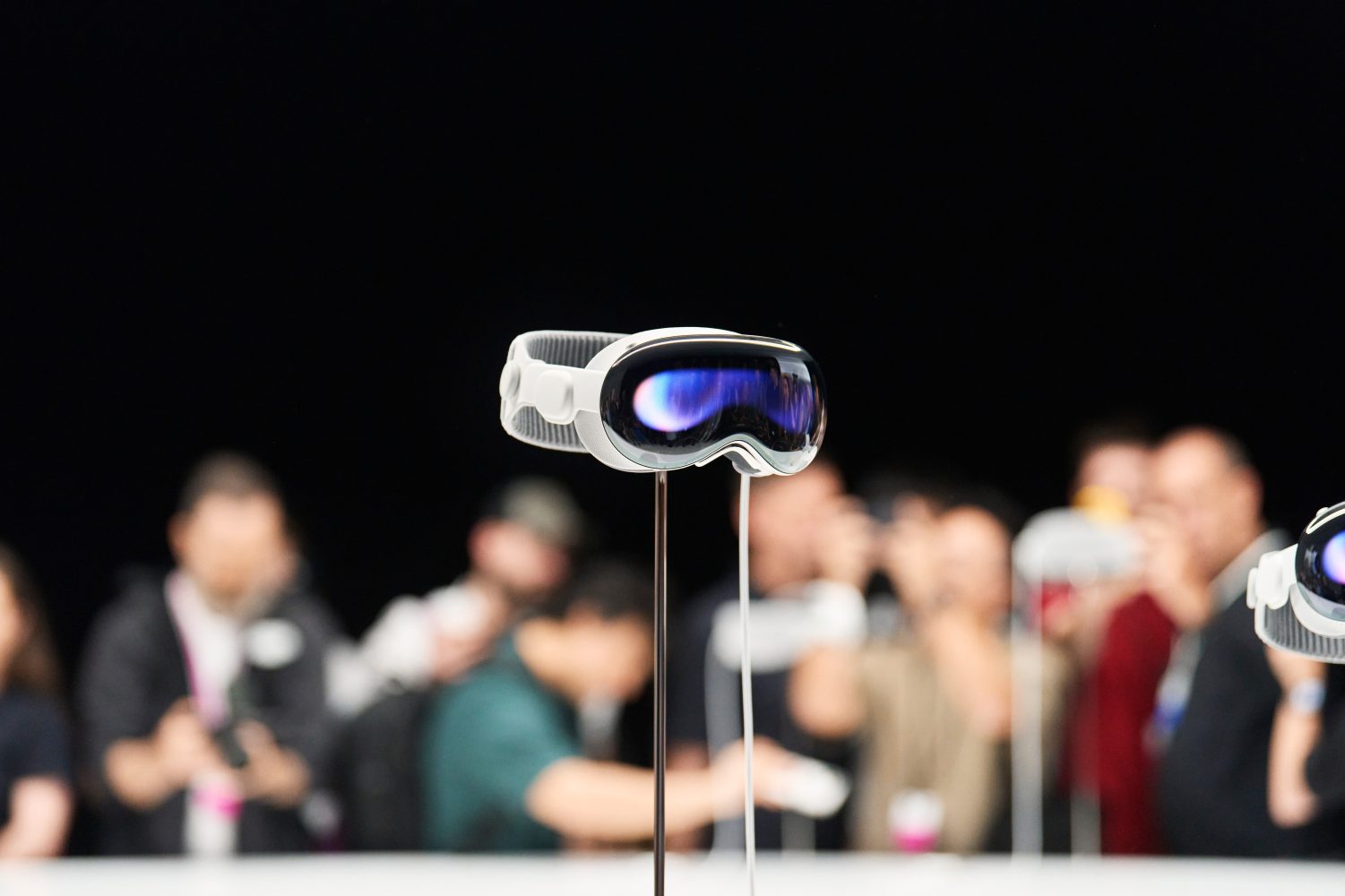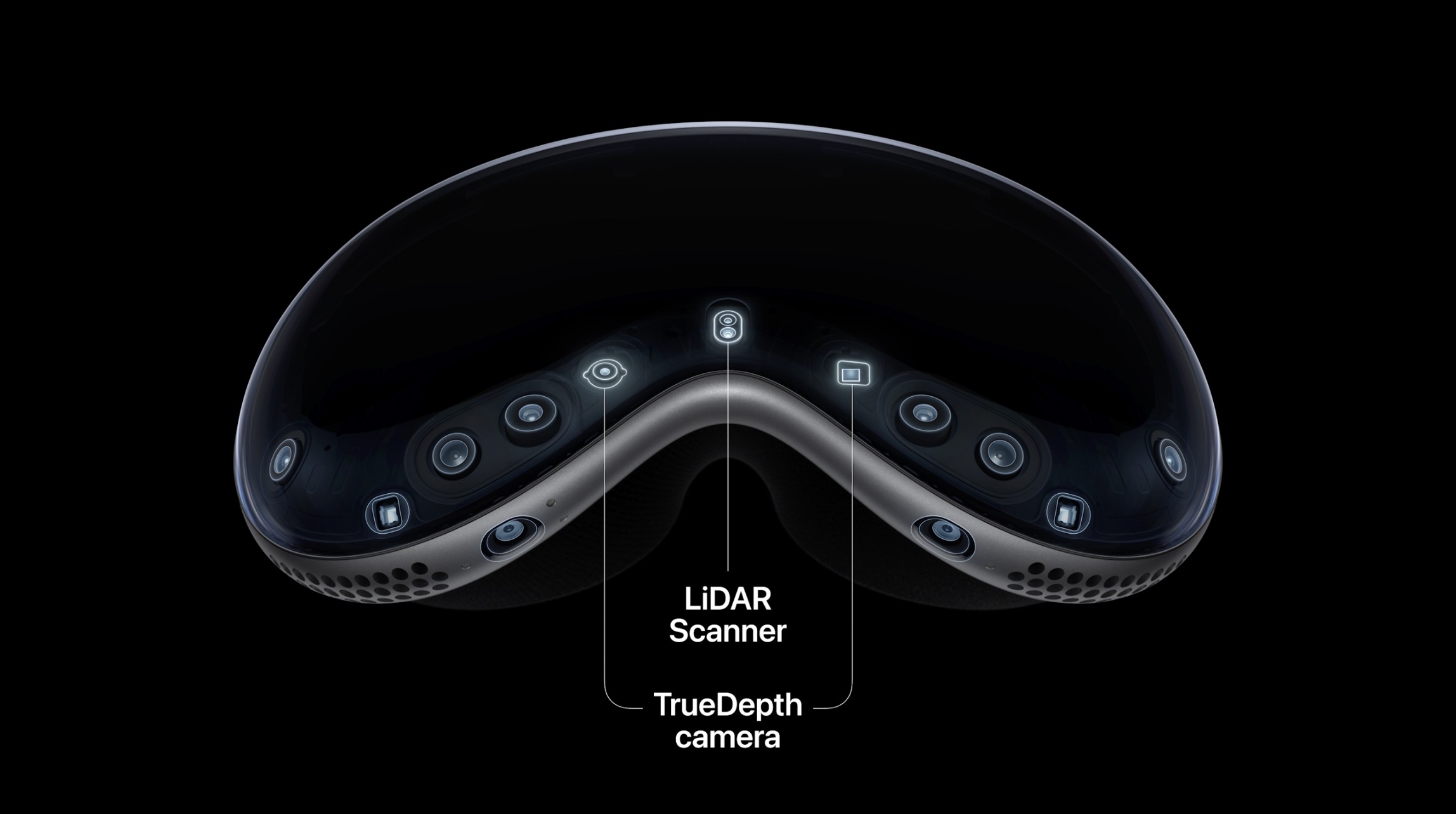
After years of rumors, Apple has officially announced its mixed reality headset called Vision Pro. The device features state-of-the-art hardware, but that comes with a price tag: $3,499. It’s hard to expect that Apple Vision Pro will have mass adoption in its first generation, which is why Apple needs a more affordable model. But building a cheaper model won’t be easy.
Apple Vision Pro specs
Despite the announcement at WWDC 2023, Apple didn’t provide many details about the internal specifications of the Apple Vision Pro. What we do know so far is that it features 12 cameras, five different sensors, and six built-in microphones.
When it comes to the display, Apple says it has “more pixels than a 4K TV for each eye.” More precisely, the micro-OLED panels used for the eyes feature 23 million pixels in total and a refresh rate of 90Hz. There’s also an external panel with a lenticular lens capable of projecting 3D images, which is used for the EyeSight feature.
Inside, Apple Vision Pro is powered by the M2 chip, while it also has a new R1 chip for rendering the images captured from the cameras in real time. The headset also comes with two built-in speakers that deliver Space Audio to the user.
When it comes to the materials, Apple has opted for a laminated glass for the surface, while most of the body is made of aluminum. The Light Seal is magnetic and made of a “soft textile,” and Apple says it will be available “in a range of shapes and sizes.” The headband is also interchangeable and made of a cushioned fabric.

The $3,499 price tag
According to Apple, Vision Pro will start at $3,499, which shocked a lot of people who were expecting it to cost something between $2,500 and $3,000. And by “starts at,” Apple implies that there will be some even more expensive configurations – although we have no idea what the differences will be.
Just as with the Apple Watch, Apple might offer different styles of headband and Light Seal that can be more expensive depending on the material. Apple also didn’t give details about the internal storage of its headset, so maybe we’ll have different options available to buy.
The thing is, according to analysts, the price of the Apple Vision Pro is close to how much the company spends to build each unit due to its complexity. And if Apple wants the visionOS platform to become more popular (especially among developers), it will need a more affordable version of the Apple Vision Pro. But how will Apple do this?
A cheaper Apple Vision
Bloomberg’s Mark Gurman recently reported that Apple is already working on a cheaper version of its headset to increase the popularity of the platform. However, while a cheaper version implies that it will have weaker hardware, it’s hard to imagine what exactly Apple can cut to make Apple Vision Pro cheaper without affecting its core functionality.
For instance, Gurman believes that Apple may opt for a simpler headband design and remove the built-in speakers, forcing users to buy AirPods or other wireless earbuds. I wouldn’t be surprised if a cheaper version is shipped without the external battery as well, since Apple itself emphasizes that users can connect Vision Pro to the power to use it without restrictions.
The journalist also believes that a cheaper Apple Vision will have an “iPhone-grade chip or an older Mac chip” instead of the M2. For example, Apple could power it with the M1 chip or even something like the A16 Bionic chip. Having slightly lower resolution displays would also help to reduce costs and allow the headset to run on a less powerful chip.

There are some things that I believe Apple would never remove in order not to compromise the experience, like EyeSight and the advanced sensors to detect exactly where the user is looking.
The future Apple Vision lineup
Top comment by Horst Bockman
By the time a cheaper version is available, the M2 will be old. Apple needn't optimize the software for anything less than an M2 ever. The M3 will probably be widely available, too, and could be cheaper to support than M2 (faster, less cooling requirements, etc.)
By choosing the name Vision Pro, Apple leads us to believe that it’s only a matter of time before we see a non-Pro version of its headset. But since Vision Pro won’t hit the stores until early 2024, it’s hard to imagine that a cheaper version will be announced only months later.
Gurman claims that Apple aims to release a cheaper Apple Vision by the end of 2025. By then, the company would be able to optimize the manufacturing process and save costs. Perhaps this is when Apple will also introduce a Vision Pro 2 with an even more powerful chip, which would allow Apple to keep selling a cheaper model with M2.
But of course, I don’t expect that this more affordable Apple Vision model will be much cheaper. I’d say it will cost around $2,500 – $1,000 less than the Pro version. It’s still a pretty high price, but it should help convince a few more people to buy an Apple Vision.
What do you think about the idea of having a cheaper Apple Vision with some compromises? Let us know in the comments section below.
FTC: We use income earning auto affiliate links. More.


Comments